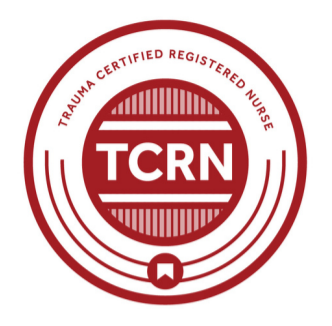3 musculoskeletal injury complications that can be life-threatening – Trauma System News
Approximately 7 out of 8 blunt trauma patients have some type of musculoskeletal injury. While most complications of musculoskeletal trauma are not life-threatening, these injuries can lead to some series conditions that worsen patient outcomes.
Trauma and emergency nurses should recognize the potential for these life-threatening complications and understand the treatment options.
1. Compartment Syndrome
Compartment syndrome is a condition in which increased pressure within a bodily compartment compromise blood circulation and tissue function within that compartment. This condition is only found in parts of the body where a strong fascial membrane contains muscle groups.
Compartment syndrome can involve a vicious cycle:
- An increase in compartment volume and any external restriction of compartment size can lead to an increase in compartment pressure.
- This increase in pressure can lead to a decrease in arterial pressure and an increase in venous pressure.
- This can result in capillary bed collapse, which will lead to decreased tissue perfusion and tissue death.
- Alternatively, increasing venous pressure can result in an increase in capillary permeability, which worsens edema and further increases compartment pressure.
Nurses should be award of the clinical signs that are associated with compartment syndrome:
- The hallmark sign of compartment syndrome is pain.
- Some patients describe the feeling of tensing or firmness in their extremities.
- Pain with passive stretching of the muscles can be an earlier sign of compartment syndrome.
- Diminished sensation and weakness can be later signs of this condition.
- Paralysis is often a very late sign.
If the cause of the compartment syndrome is an external restriction (e.g., a splint), the treatment is to remove the restrictive device.
Elevation of the affected limb should be avoided because it reduces blood flow arterially and can worsen pressure in the limb.
Fasciotomy decompresses the compartment and helps restore blood flow to the ischemic tissue. If done in time, it can restore limb function and prevent the need for amputation. Based on current research, fasciotomy for acute compartment syndrome (ACS) is indicated when:
ACS delta pressure (diastolic BP – measured compartment pressure) < 20 to 30 mmHg
When taking a pressure reading with an intracompartmental pressure monitor, insert the needle as close to the affected compartment as possible since this is where the highest pressure will be.
2. Fat Embolism Syndrome
Fat embolism syndrome is a condition in which circulating fat emboli lead to dysfunctions of the lungs, brain and skin.
Most cases of fat embolism syndrome are associated with musculoskeletal injury (theoretically, because fat globules that are released from the bone medullary space become fat emboli in the bloodstream). About 2% of patients with long bone fractures develop fat embolism syndrome.
The classic symptoms of fat embolism syndrome are:
- Increased respiratory rate
- Difficulty breathing
- Hypoxemia (in one study, present 96% of the time)
- Change in mental status (59% of the time)
- Petechial rash (up to 50%, often considered a late sign) typically affecting the conjunctiva and chest
Treatment for fat embolism syndrome includes fluid resuscitation, supplementation oxygen and (rarely) aggressive therapies such as vasopressors or ventilation.
3. Rhabdomyolysis
Rhabdomyolysis is a condition in which muscle damage leads to the release of creatine kinase (CK), electrolytes and myoglobin. This may lead to arrhythmias (due to electrolyte abnormalities), metabolic acidosis and (if untreated) acute kidney injury.
In the context of musculoskeletal injury, rhabdomyolysis is most often associated with crush injuries. However, this condition can also be caused by burns, marked exertion, drugs or toxins.
- Rhabdomyolysis is classically known for its presentation of dark-colored urine (due to myoglobin release).
- Other consistent symptoms of rhabdomyolysis are muscle pain and weakness. There may or may not be swelling in the muscles upon presentation.
- There may also be skin signs of tissue damage such as blisters or alterations in skin color, which are present in less than 10% of cases.
Diagnosis is largely based on elevated levels of CK. This elevation can start to occur within 2 hours of muscle damage, and it can take up to 72 hours to reach its peak. When a patient finally presents to the healthcare system, their CK can be up to 5 times the normal values.
Treatment typically involves fluid replacement and electrolyte balance. The monitoring of urine output helps guide whether the resuscitation is effective, as the color should start to lighten and appear more clear-yellow.
 Learn more about musculoskeletal injuries: This article is based on Musculoskeletal Injuries Are a Snap!, an interactive online course from the Board of Certification for Emergency Nursing (BCEN®). Developed by nursing experts, this CE-eligible course provides a detailed overview of musculoskeletal injuries and treatment principles. To access this course and other learning opportunities for trauma nurses, visit BCEN Learn.
Learn more about musculoskeletal injuries: This article is based on Musculoskeletal Injuries Are a Snap!, an interactive online course from the Board of Certification for Emergency Nursing (BCEN®). Developed by nursing experts, this CE-eligible course provides a detailed overview of musculoskeletal injuries and treatment principles. To access this course and other learning opportunities for trauma nurses, visit BCEN Learn.
 Musculoskeletal Injuries Are a Snap! supports the continuing education requirements of the Trauma Certified Registered Nurse (TCRN®) program. The TCRN credential is the only national board certification for trauma nursing, and it spans the body of knowledge for care of the injured patient. More than 7,500 nurses worldwide have earned the TCRN credential. For more information, click here.
Musculoskeletal Injuries Are a Snap! supports the continuing education requirements of the Trauma Certified Registered Nurse (TCRN®) program. The TCRN credential is the only national board certification for trauma nursing, and it spans the body of knowledge for care of the injured patient. More than 7,500 nurses worldwide have earned the TCRN credential. For more information, click here.



